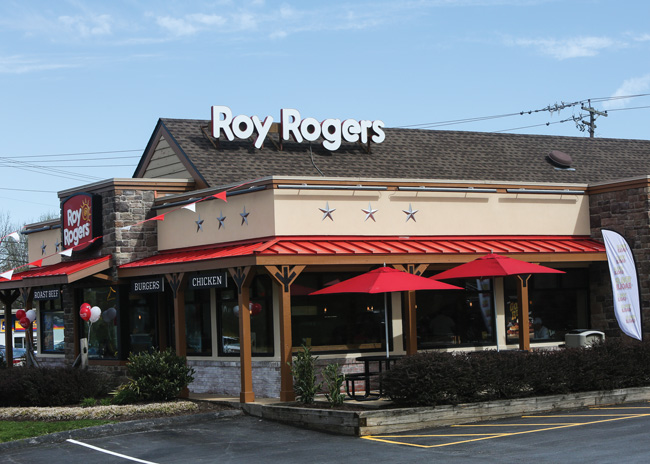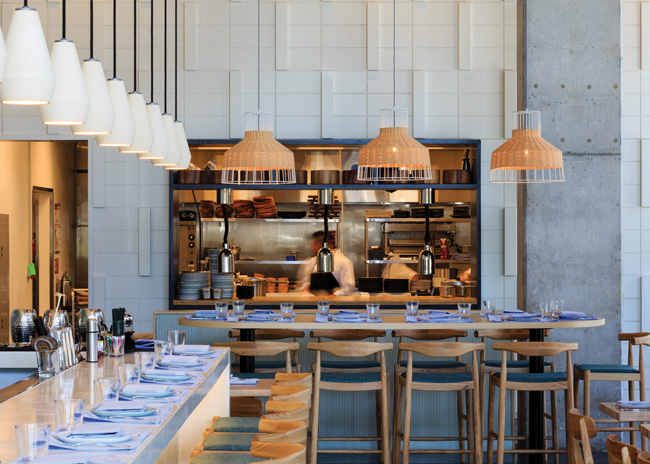Americans’ demand for coffee continues to be as robust as a potent espresso. In 2024, the number of U.S. adults who have had coffee in the past day increased by 37% since 2004, according to the National Coffee Association. More than one-third (36%) of coffee drinkers have coffee outside of their homes, and many of those order brews at coffee-focused restaurants.
Customers are increasingly drawn to outlets that offer drive-thru service, and brands such as Scooter’s Coffee and Dutch Brothers that focus on drive-thru service are growing with that demand. Even the big coffee kahuna, Starbucks, is adjusting its business strategy. Starbucks’ chairman recently noted the importance of order efficiency in drive-thru on an earnings call. The company, he said, must focus more on drive-thru service. This is a course change for a business that made its name cultivating an appealing indoor environment for patrons to linger while sipping a fine brew.
 Drive-thrus for brands like Caribou Coffee are now an essential part of the business plan. Image courtesy of Caribou Coffee
Drive-thrus for brands like Caribou Coffee are now an essential part of the business plan. Image courtesy of Caribou Coffee
Drive-thru-only coffee outlets not only satisfy consumer demand for quick service, but they also offer several advantages for developers and brands. The typical building size is 1,500 square feet or less, so the construction cost of these small formats is less than the average QSR. Smaller building footprints help landowners optimize the value of smaller parcels and enable brands to enter densely populated urban markets in a cost-effective way. They also allow brands to maximize operational efficiencies through reduced facilities management expenses and labor costs.
Planning a successful coffee outlet — whether drive-thru-only or one with both in-store and drive-thru service — starts with selecting a suitable location. “A big percentage of sales is in the morning,” notes Christian Castro, design director and principal with architecture firm Gensler. So, brands look for sites with heavy morning commuter traffic.
“Easy access is crucial,” Castro says. If the location is within a strip mall, for instance, the most direct route from the entrance to the drive-thru queue is desirable. A location close to the street is best in terms of accessibility and visibility.
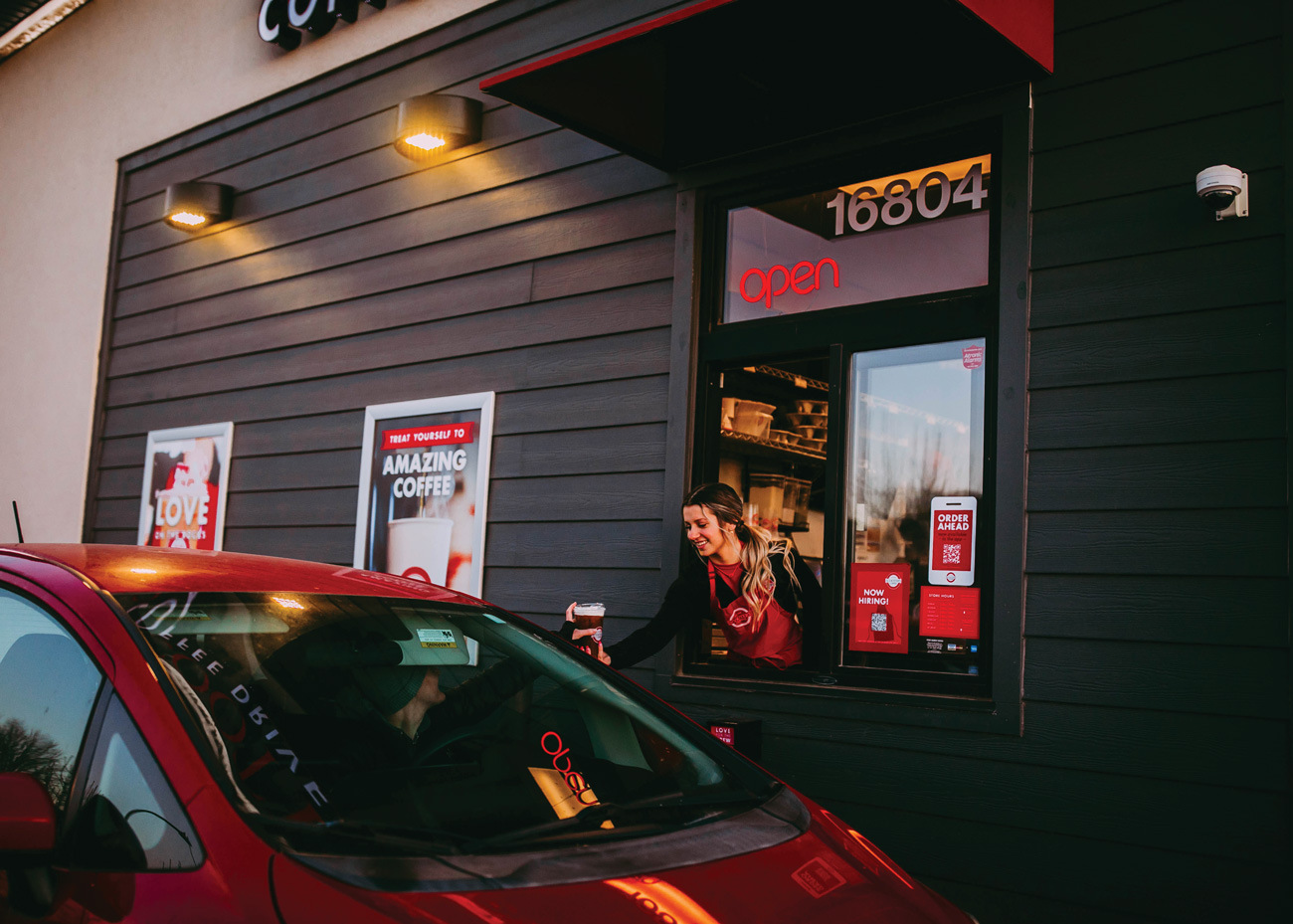 Standalone, drive-through-only stores can be sized small enough to fit into tight spaces. Image courtesy of Scooter’s Coffee
Standalone, drive-through-only stores can be sized small enough to fit into tight spaces. Image courtesy of Scooter’s Coffee
When it comes to conversions of existing properties, the area available for car stacks can be a deciding factor. A lack of space can make a site a no-go. If there isn’t enough room for the expected line of vehicles at peak hours, brands may have to look elsewhere unless they can rearrange the parking area to better accommodate long queues. The arrangement of the drive-thru lane needs to have ample space for vehicles to navigate in and out of the queue. “On the exterior, good layout means we’re ensuring an appropriate drive-thru radius that minimizes risk or potential damage to vehicles or the store,” says Emily Heuring, senior director, real estate, design and construction, Caribou Coffee.
When the store is set far back from the street, prominent wayfinding to guide customers to the drive-thru queue is essential. “You want to make access as easy and effortless as you can,” Castro says. Signs with recognizable brand logos and fonts coupled with arrows pointing the way often fulfills this function. Painting arrows on the asphalt is another wayfinding option. Beans & Brews Coffeehouse places “Thank You” signs at the end of drive-thrus — a nice touch that points patrons toward the proper exit points of the property. It’s important to include signage indicating that the drive-thru exit is an exit only to prevent wrong-way travelers, notes John Owen, chief operating officer, Scooter’s Coffee.
Although many brands provide mobile apps for customers to place orders from their phones, most drive-thru customers order from the drive-thru lane’s menu board. “We don’t see a lot of pickup orders coming through the drive-thru currently,” says Sarah Anderson, senior vice president of operations, Beans & Brews Coffeehouse. “For drive-thru and lobby pickup orders, we have technology that notifies employees with designated prep and pickup times to complete orders either for third-party or online pickup. We designate pickup stations and clearly package and label the order, then validate and hand off the order to the guest or the delivery service representative.”
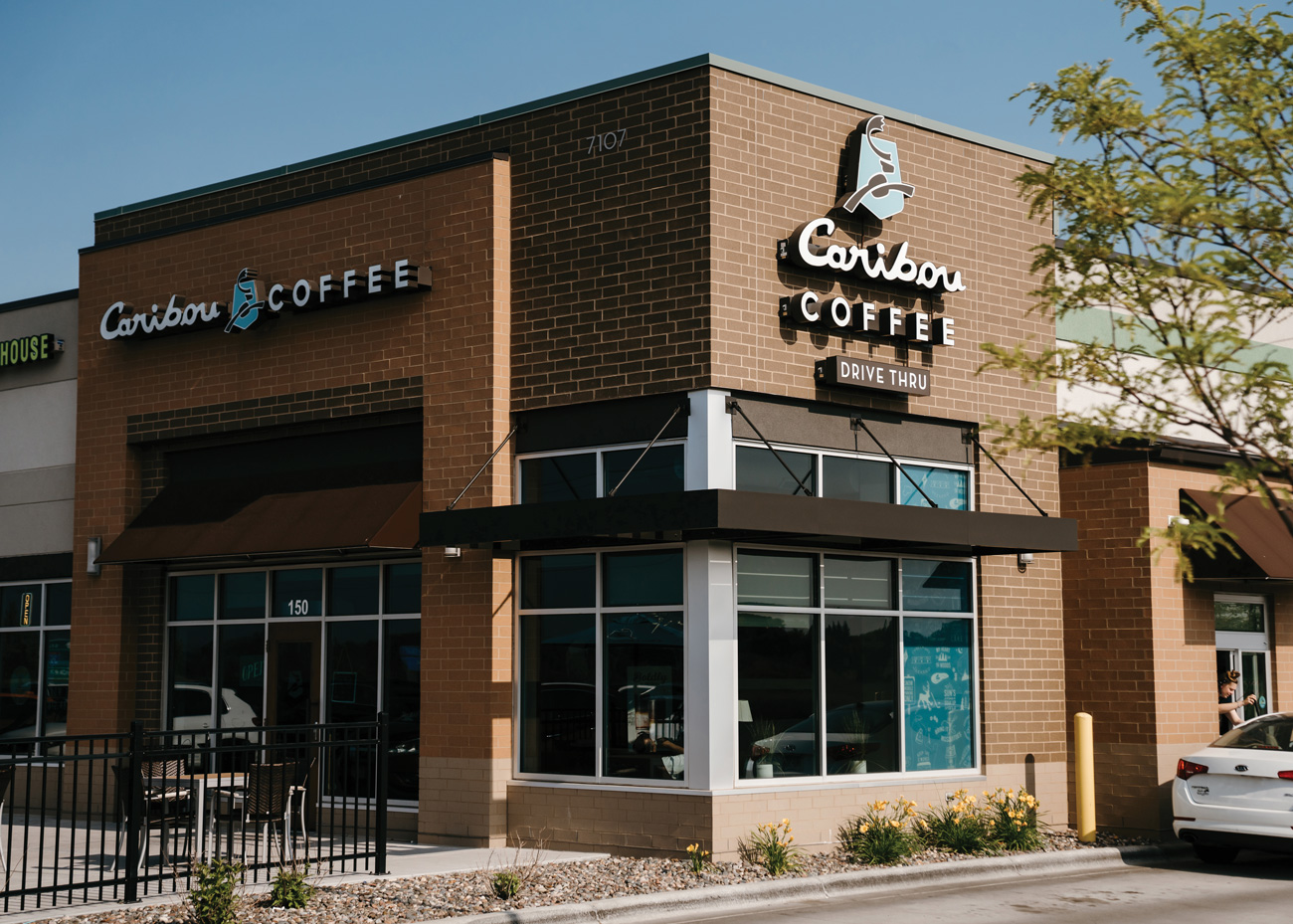 End caps within strip malls are a popular choice for coffee drive-thrus. Image courtesy of Caribou Coffee
End caps within strip malls are a popular choice for coffee drive-thrus. Image courtesy of Caribou Coffee
The first point of contact, the menu board, should be easily legible, displaying the most popular items. Digital menu boards offer the ability to easily change the product lineup. “Once a guest is coming into a drive-thru, they see a preview board that promotes items based on the time of day,” says Heuring. “They then approach the order board and speaker canopy, where they’ll see additional signage for our hot and cold drinks and food menu items based on the time of day.”
Some brands bolster order-taking by stationing personnel within the drive-thru queue. “During busy periods, a barista can step outside into the drive-thru line to take orders at or before the speaker box using a tablet,” says Owen. “This provides a face-to-face ordering experience and, by getting orders to our baristas inside sooner, we can keep customers moving through our drive-thrus faster than we would if we had to wait for each car to arrive at the speaker box to order.”
Brands should consider slack time in the drive-thru line from the customer’s perspective. “What happens from the moment you place your order until you receive your order?” Some coffee drive-thrus in Europe post art along the queue, he says. Some concepts provide outdoor seating that is visible from the car stack. “You see people having a good time, and you’re not just looking at a blank wall,” Castro says.
While most brands design sites with a single pickup window, some opt for two windows, one for customers to make their payment and the other for receiving their order. The double-window format has the advantage of giving customers the sense that the store is operating efficiently as they make steady progress through the car stack, Castro says. Having payment separated from order distribution also allows the employee responsible for handing customers their order more time and attention for fulfilling the order quickly and accurately.
On the other hand, a single-window format provides customers with one employee responsible for payment and order fulfillment. This single point-of-contact allows customers to resolve order inaccuracies with one person.
“We’ve tested two window drive-thrus but feel we can deliver a superior experience and be more efficient with one window,” Heuring says. “It also promotes a better connection between our team members and guests, especially with repeat guests and regulars.”
Drive-thru windows, be they single or double, should allow easy visibility of the car stack for window attendants to monitor the length of the line and how quickly it is moving. It’s important to size windows appropriately to provide an unobstructed view from where the employee stands.
The internal layout of the drive-thru window area, especially the placement of the POS station, must ensure that the opening of the window allows direct visual between the customer and staff member, says Paul Spiers, vice president, planning, design & construction, Beans & Brews Coffeehouse. That means the POS station should face toward the window, not away from it. A staging counter should also be within easy reach of the drive-thru window opening.
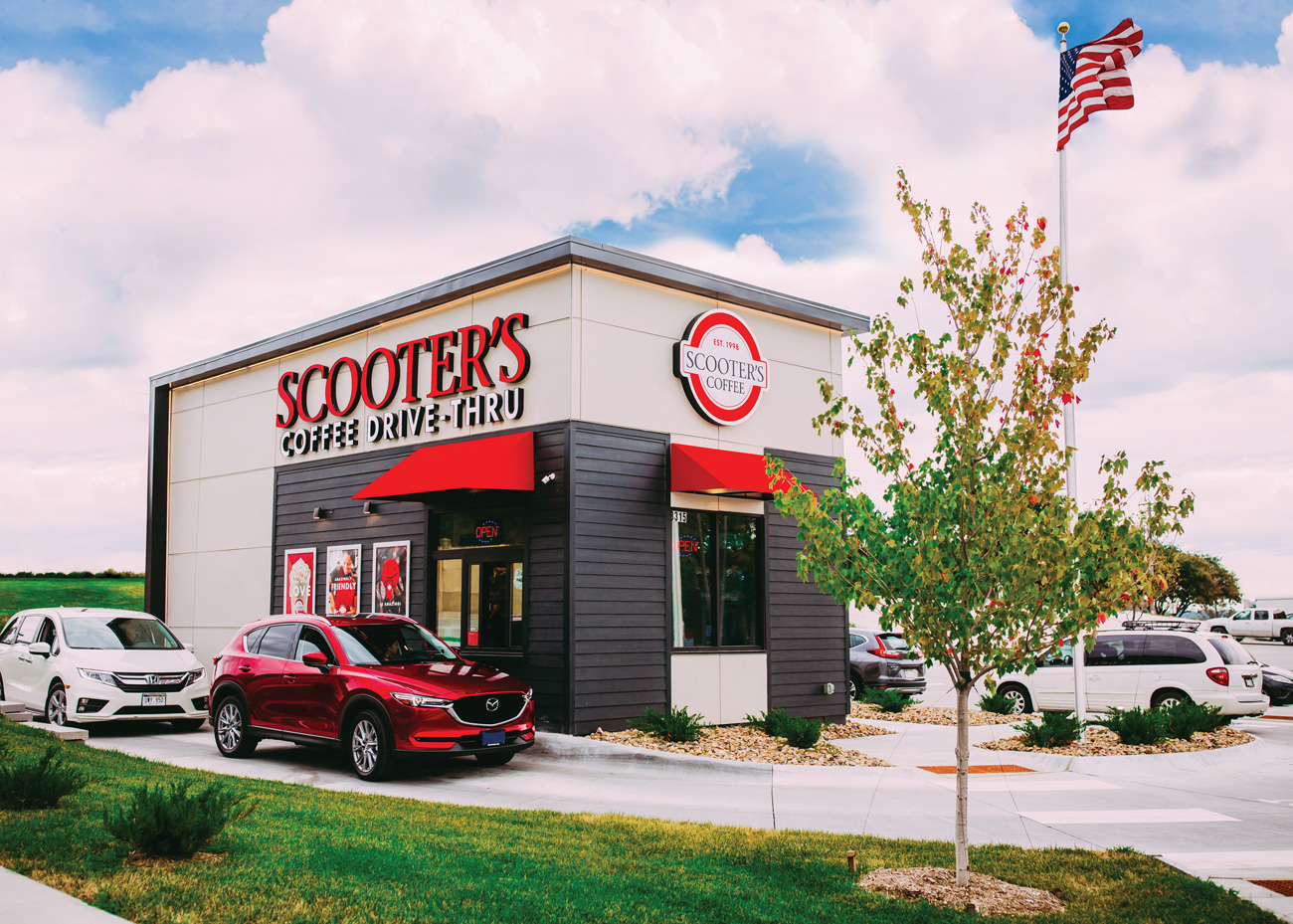 Drive-thru windows must be sized large enough for associates to easily hand off orders and have a good view of the car stack. Image courtesy of Caribou Coffee
Drive-thru windows must be sized large enough for associates to easily hand off orders and have a good view of the car stack. Image courtesy of Caribou Coffee
For optimal efficiency, brands use an assembly-line approach to crafting orders. “We design our stores so that all of the barista stations inside are funneling products toward the window as they’re being created,” Owen says. “As drinks get closer to completion, they get moved closer to the window.”
Having workstations defined with specific roles is a must, according to Anderson. Beans & Brews trains employees for specific areas of responsibility — drive-thru and lobby order takers, beverage and food prep, and backup role assignments. Each staff member must have ingredients and supplies within easy reach to fulfill their duties. Like a well-trained athletic team, staff members know in what sequence to prepare each order quickly and accurately. Kitchen display system monitors must be in sight of baristas to ensure that each order is made according to customer specifications. Thermal or sticker chits affixed to containers help drive-thru window attendants match each order to the correct customer.
With numerous options to flavor drinks — different types of sweeteners and creamers, for example — baristas usually dress coffee orders for customers. Sometimes customers prefer to finish their drink orders themselves. Beans and Brews stations a small condiment station at the drive-thru for attendants to pass off items to guests including cream, sugar/sweetener packets, and various sauce packets for food items.
Drive-thru service done well has created an enormous customer base — one that got a boost from the pandemic when in-store service was shut down. “More than 90% of our business at Scooter’s Coffee comes through our drive-thru lanes,” Owen says. “We have a limited number of locations with interior seating and even fewer with no drive-thru lane — oftentimes in hospitals, airports, or malls.”
Indeed, most coffee-oriented brands today must make drive-thrus an integral part of their business model, not an afterthought.

